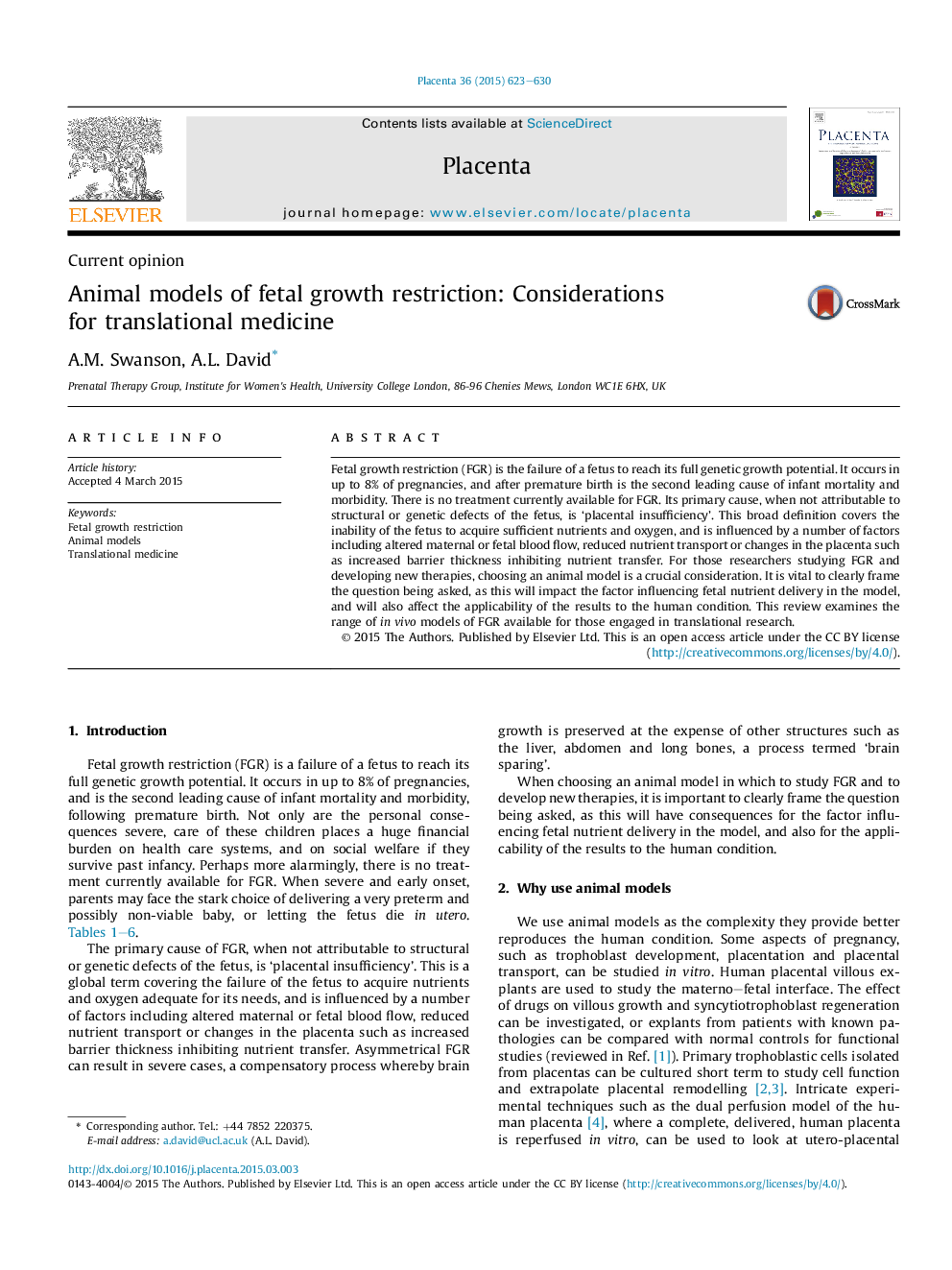| کد مقاله | کد نشریه | سال انتشار | مقاله انگلیسی | نسخه تمام متن |
|---|---|---|---|---|
| 5894796 | 1154444 | 2015 | 8 صفحه PDF | دانلود رایگان |

- Fetal growth restriction is a condition for which there is no current treatment.
- Development of new therapies for fetal growth restriction requires the use of animal models in which to test efficacy and safety.
- The choice of animal model is crucial for validity of research.
Fetal growth restriction (FGR) is the failure of a fetus to reach its full genetic growth potential. It occurs in up to 8% of pregnancies, and after premature birth is the second leading cause of infant mortality and morbidity. There is no treatment currently available for FGR. Its primary cause, when not attributable to structural or genetic defects of the fetus, is 'placental insufficiency'. This broad definition covers the inability of the fetus to acquire sufficient nutrients and oxygen, and is influenced by a number of factors including altered maternal or fetal blood flow, reduced nutrient transport or changes in the placenta such as increased barrier thickness inhibiting nutrient transfer. For those researchers studying FGR and developing new therapies, choosing an animal model is a crucial consideration. It is vital to clearly frame the question being asked, as this will impact the factor influencing fetal nutrient delivery in the model, and will also affect the applicability of the results to the human condition. This review examines the range of in vivo models of FGR available for those engaged in translational research.
Journal: Placenta - Volume 36, Issue 6, June 2015, Pages 623-630